Review of 98 single board computers. Part 4
Part 1
Part 2
Part 3
Part 4
Parallella

Company / Project - Adapteva, Parallella.org
LinuxGizmos Review
Product page
CPU - Xilinx Zynq-7020 or -7010 SoC (2x Cortex-A9 @ 667MHz plus FPGA); 16-core Epiphany RISC chip
Memory - 1GB DDR3 RAM
Price - $ 99
The board is designed to build energy-efficient server clusters and parallelism research, and is based on the Zynq ARM / FPGA SoC running the Ubuntu 15.04 distribution, called Parabuntu, as well as the “home-grown” 16-core Epiphany co-processor. Ports include microSD, GbE, micro HDMI, and two USB. Four 60-pin connectors are used to expand I / O and are connected to the FPGA and the Epiphany chip. Adapteva also offers a $ 75 Micro-Server version with Zynq-7010, which does not have USB, HDMI, and I / O extensions. Last year, the Parallella Aluminum Case was also released for $ 29.50 with a heat diffusing plate, but now it is not on sale. The new Epiphany-V chip, containing 4.5 billion transistors, should have been released several months ago.
pcDuino Lite WiFi
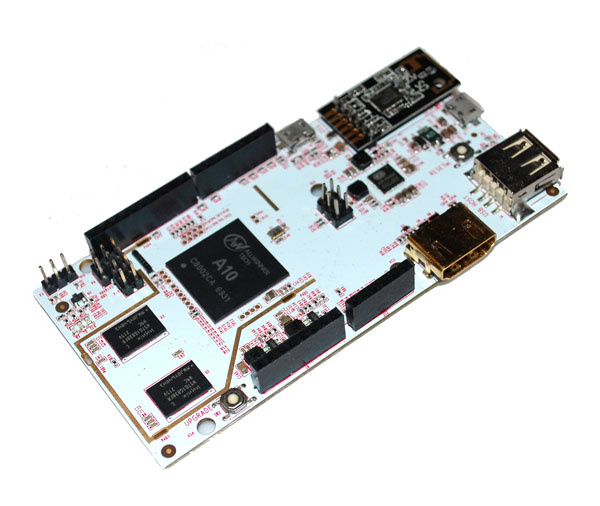
Company / Project - LinkSprite Technologies
Product page
CPU - Allwinner A10 (1x Cortex-A8 @ 1GHz); Mali-400 GPU
Memory - 256MB RAM; 2GB flash
Price - $ 29
The pcDuino Lite from LinkSprite has been discontinued, but similar pcDuino Lite WiFi continues to be released. The 100 x 52mm mainboard works under Ubuntu 12.04 with the Linux 3.0 kernel on the old school Cortex-A8 Allwinner A10. The board is powered by 5V, the board uses 256MB RAM, 2GB flash, an HDMI port, an Arduino-style interface, and of course, WiFi. LinkSprite discontinued several boards last year, including pcDuino2, pcDuino3, and pcDuino3B. The newest pcDuino3 Nano on the Allwinner A20 is listed as "not available - check back later."
pcDuino8 Uno
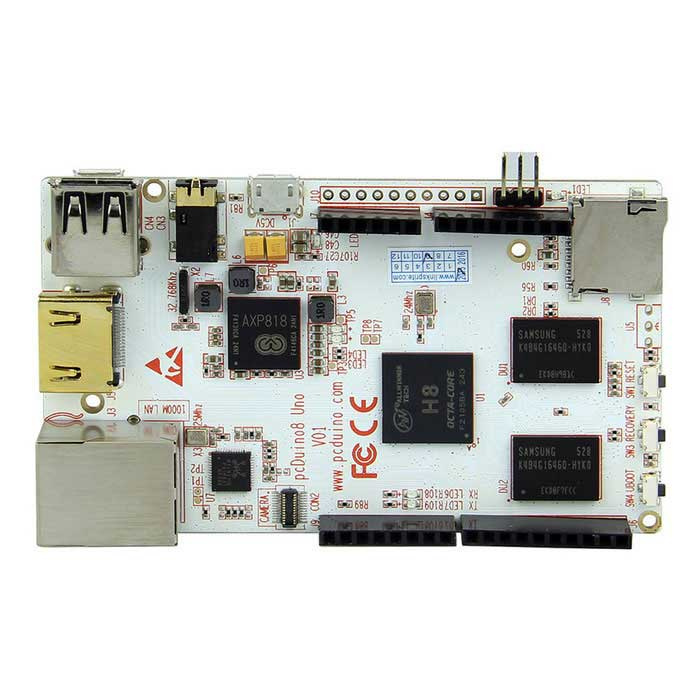
Company / Project - LinkSprite Technologies
Product page
CPU - Allwinner H8 (8x Cortex-A7 @ 2GHz); PowerVR SGX544 GPU
Memory - 1GB DRAM
Price - $ 49
The pcDuino 8 Uno board is not on the main LinkSprite page, but is available, in the depths of the site. The board has an eight-core Allwinner H8 at a frequency of 2GHz, with the usual pcDuino Arduino expansion connectors. The board size is 92 x 54mm, the board has microSD, GbE, USB host, USB OTG, HDMI, audio, MIPI-CSI, and IR. There is a version of PCDuino 8, working only for Android, for OEMs, it differs slightly in I / O connectors and in the case.
Pepper 43R / 43C

Company / Project - Gumstix
Product page
CPU - TI Sitara AM3354 (1x Cortex-A8 @ 800MHz); PowerVR SGX530 3D GPU
Memory - 512MB RAM
Price - $ 169
Gumstix, known for its Overo and DuoVero modules and their respective carrier boards, also released the Pepper monolater, last year, and provides complete circuits. The original Pepper for $ 250 appeared in 2013 and was replaced by three new models, but on a weaker TI AM3354 SoC instead of the original AM3359. SoC AM3354 integrated with 3D PowerVR GPU, but in the SoC there is no PRU module. Pepper 43R and 43C for $ 169 are very similar, but Pepper DVI-D is significantly different. The Pepper 43R supports a resistive touchscreen, and the Pepper 43C supports capacitive, and each optionally comes with a 4.3-inch touchscreen for $ 39. The 43R version also has an eight-channel bidirectional logic level converter and a down converter from TI, as well as many other minor differences. On both the boards there is a GbE port, a microSD slot, two micro-USB ports, a USB console port ( probably a UART-USB bridge, approx. ), And a TI WiLink 8 WiFi / BT 4.1 LE module with an access point mode and a U connector .FL. The Pepper 43 is also equipped with a 20-pin GPIO, audio jack, LiPo battery support, PMIC, and LEDs.
Pepper DVI-D

Company / Project - Gumstix
Product page
CPU - TI Sitara AM3354 (1x Cortex-A8 @ 800MHz); PowerVR SGX530 3D GPU
Memory - 512MB RAM
Price - $ 119
The Pepper DVI-D card has a similar size, TI AM3354 SoC, and 512MB RAM like the Pepper 43R and 43C (see above), but much cheaper and has a different purpose. Instead of supporting the touchscreen, the Pepper DVI-D card has an HDMI port (via DVI-D) and supports HD instead of 720p. Other features include a microSD slot, a GbE port, an audio jack, a serial port, a USB host port, and two micro-USB device ports. Like the Pepper 43, Yocto, Ubuntu, and Android images are available. The site has a community of developers Gumstix, with projects and guides. Like other Peppers boards, this single board is designed in Gumstix Geppetto DIY, and supports I / O customization using Geppetto. You can send them your design board and order its production.
PICO-IMX6UL-KIT
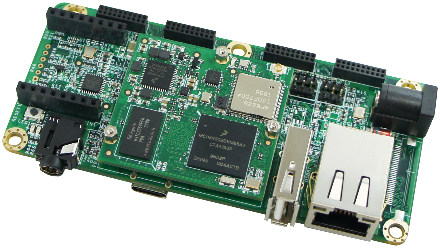
Company / project - Wandboard.org; Technexion; NXP
LinuxGizmos Review
Product page
CPU - NXP i.MX6 UltraLite (1x Cortex-A7 @ 528MHz); WXGA graphics
Memory - 512MB RAM; 4GB eMMC
Price - $ 65
The sandwich PICO-IMX6UL-KIT board is a rebranding of last year’s HobbitBoard extended to 512MB RAM. Instead of supporting Brillo OS from Google, it comes with a preloaded version of Brillo from Google called Android Things. The PICO-IMX6UL-KIT is a de facto reference platform for IoT-oriented OS, which also supports Raspberry Pi 3 and Intel Edison. Like the HobbitBoard and almost identical to the NXP I.MX6UL Development Platform, the PICO-IMX6UL-KIT is based on TechNexion's PICO-IMX6UL COM (which is sold as NXP Pico from NXP). Although it is a commercial product, the PICO-IMX6UL-KIT (COM and carrier) boards come with full circuits and an open license. In addition to RAM and OS, the PICO-IMX6UL-KIT is identical with HobbitBoard, and is equipped with a low-power i.MX6 UltraLite (UL), as well as WiFi, BT 4.0, 10/100 Ethernet, two USB ports, an audio jack, and PMIC. The COM board can be removed and installed in the 70-pin Hirose connector on the carrier board of Intel Edison. Board size PICO-IMX6UL-KIT 100 x 45mm. The card also has a MikroBus socket for Click extensions, as well as four Wandboard-compatible expansion slots. The set costs $ 90, but you can find it for $ 65 in ARMkits.
Pine a64
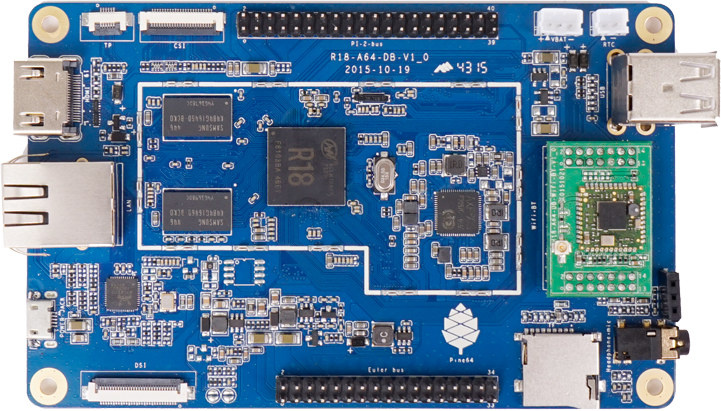
Company / Project - Pine64, Inc.
LinuxGizmos Review
Product page
CPU - Allwinner A64 (4x Cortex-A53 cores @ 1.2GHz); Mali-400 MP2 GPU
Memory - 512MB (standard), 1GB ($ 19 Plus), 2GB ($ 29 Plus) DDR3 RAM
Price - $ 15 to $ 29
The quad-core 64-bit analog of the Raspberry Pi broke the new price / performance record last spring and is still very competitive. Standard features include microSD, HDMI, Fast Ethernet, audio, two USB 2.0 ports, and micro USB ports. The board dimensions are 127 x 79mm, there is a Pi-compatible 40-pin connector and a 14-pin Euler connector. There is also an RTC. Temperature range from -20 to 70 ° C. The $ 15 model comes with 512MB RAM, but we recommend Plus models for $ 19 or $ 29, available in 1GB and 2GB configurations, respectively. A more expensive model has GbE, a touch panel interface, MIPI-DSI and MIPI-CSI ports, as well as an optional display and camera. Android 6.0 / 7.1, Remix OS 2.0, Debian Jesse Mate, and Ubuntu 16.04 are supported in Mate, Base, and minimal images. The board is also compatible with openSUSE, Armbian, Arch, Fedora, Gentoo, etc ... In January, Pine64 released the SODIMM SoPine A64 COM module, containing the Pine A64 filling. An open-source Pinebook laptop was also launched on the same A64 processor, for $ 89 (11.6 ") or $ 99 (14").
Raspberry pi zero
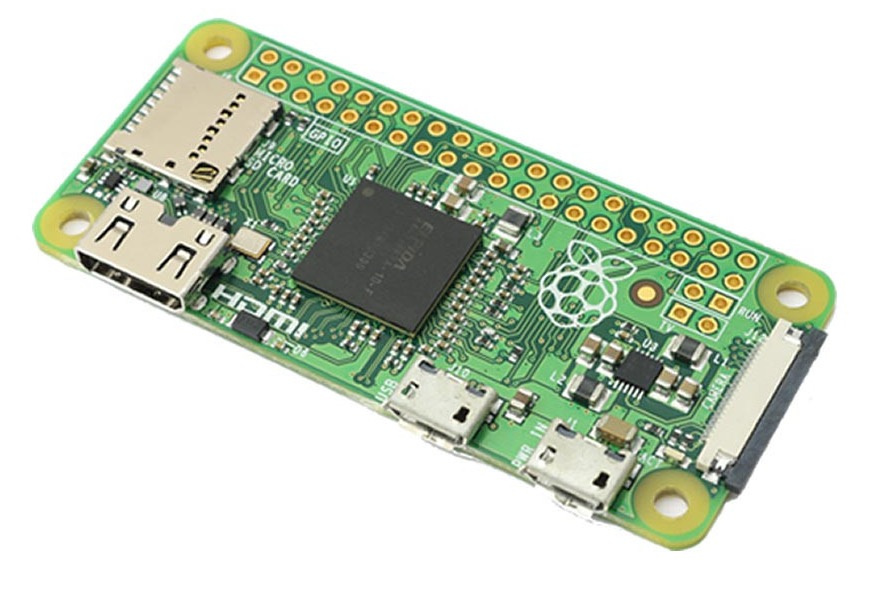
Company / Project - Raspberry Pi Foundation
LinuxGizmos Review
Product page
CPU - Broadcom BCM2835 (1x ARM1176JZFS core @ 1GHz) with FPU and VideoCore IV dual-core GPU
Memory - 512MB SDRAM
Price - $ 5 and up
With a price of $ 5 to $ 25, depending on the availability of cables and adapters (we indicated the price of $ 14 in the comparison table) - Raspberry Pi Zero for $ 5 is a very good purchase for “hacker” IoT projects with limited dimensions. The tiny 65 x 30mm Zero board has the same ARM11 processor as the Raspberry Pi A + and B +, but with a 1GHz frequency. A COM single board comes with a microSD slot, a pair of micro USB ports, and a mini HDMI port with audio support, and with a non-soldered composite video connector. There are no USB ports, no DSI and CSI ports, no audio, which are on Pi 2 and 3 cards.
Raspberry Pi Zero W
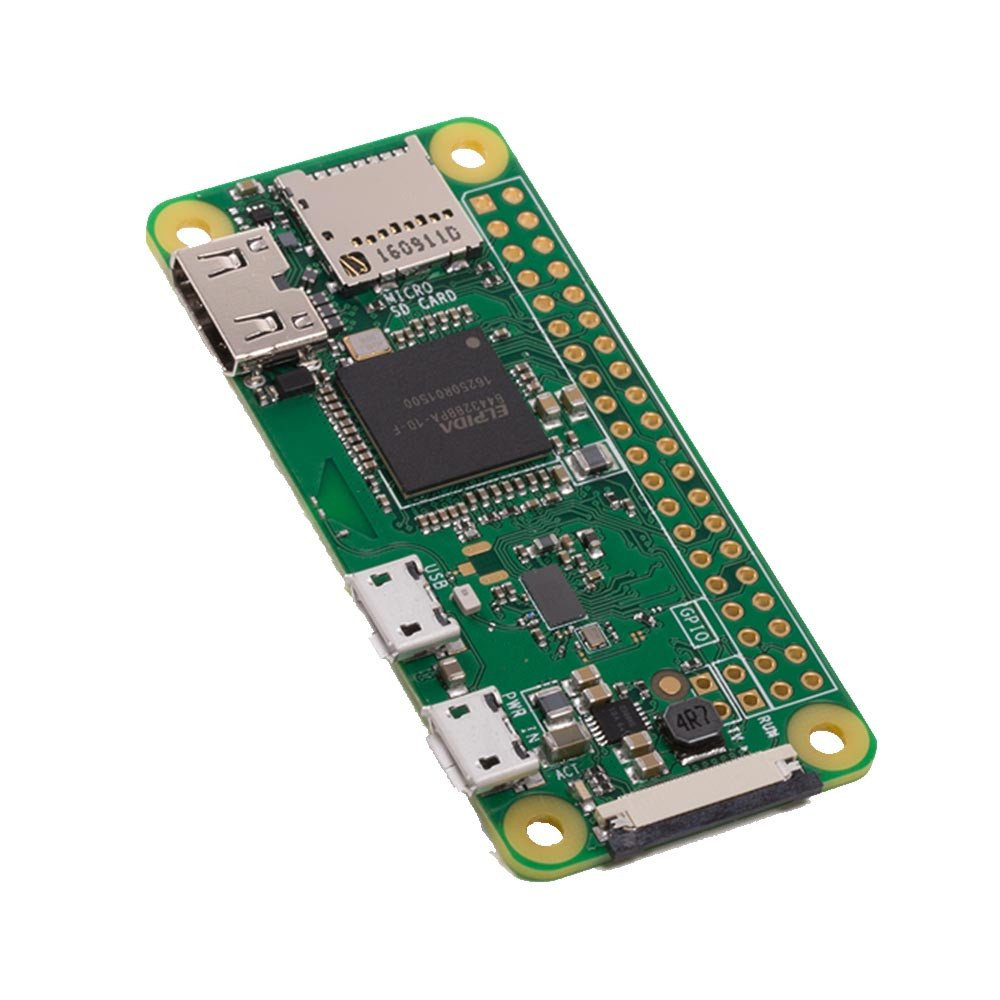
Company / Project - Raspberry Pi Foundation
LinuxGizmos Review
Product page
CPU - Broadcom BCM2835 (1x ARM1176JZFS core @ 1GHz) with FPU and VideoCore IV dual-core GPU
Memory - 512MB SDRAM
Price - $ 10 and up
The new Raspberry Pi Zero W board is identical to the RPi Zero board, except for adding the same Cypress CYW43438 wireless chip as the $ 35 Raspberry Pi 3, which provides 802.11 b / g / n and Bluetooth 4.1 with BLE. The Zero W is available for only $ 10 in outlets like Cana Kit and BuyaPi, but you will need the same extensions as Zero to get video and USB ports.
Raspberry Pi 2 Model B 1.2
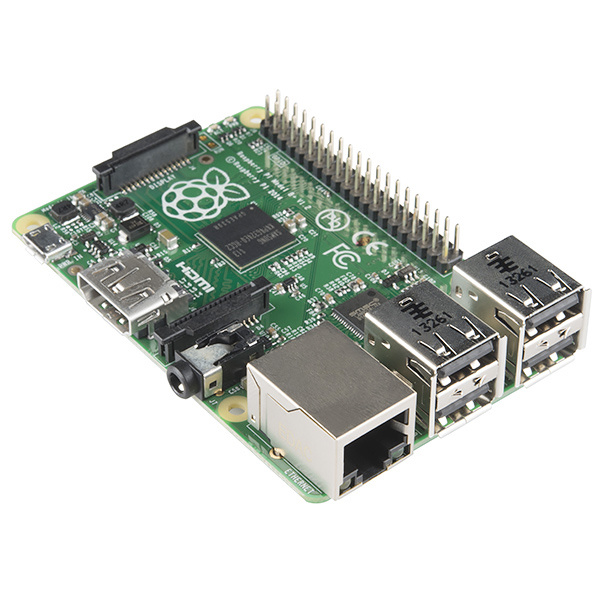
Company / Project - Raspberry Pi Trading
LinuxGizmos Review
Product page
CPU - Broadcom BCM2836 (4x Cortex-A7 @ 900MHz) or for model v1.2, Broadcom BCM2837 (4x Cortex-A53 @ 900MHz); Broadcom VideoCore IV GPU @ 250MHz
Memory - 1GB SDRAM
Price - $ 35
Last October, the Raspberry Pi 2 was redesigned into a v1.2 model, replacing the four-core A7 BCM2836 with a quad core, Cortex-A53 BCM2837, used in the Raspberry Pi 3. However, the SoC still has a clock frequency of 900MHz instead of 1.2GHz , and the board does not have WiFi and Bluetooth modules, like the RPi 3. The rest of the RPi 2 is almost identical to the faster, equipped with wireless interfaces RPi 3, but it is not cheaper.
Raspberry Pi 3 Model B
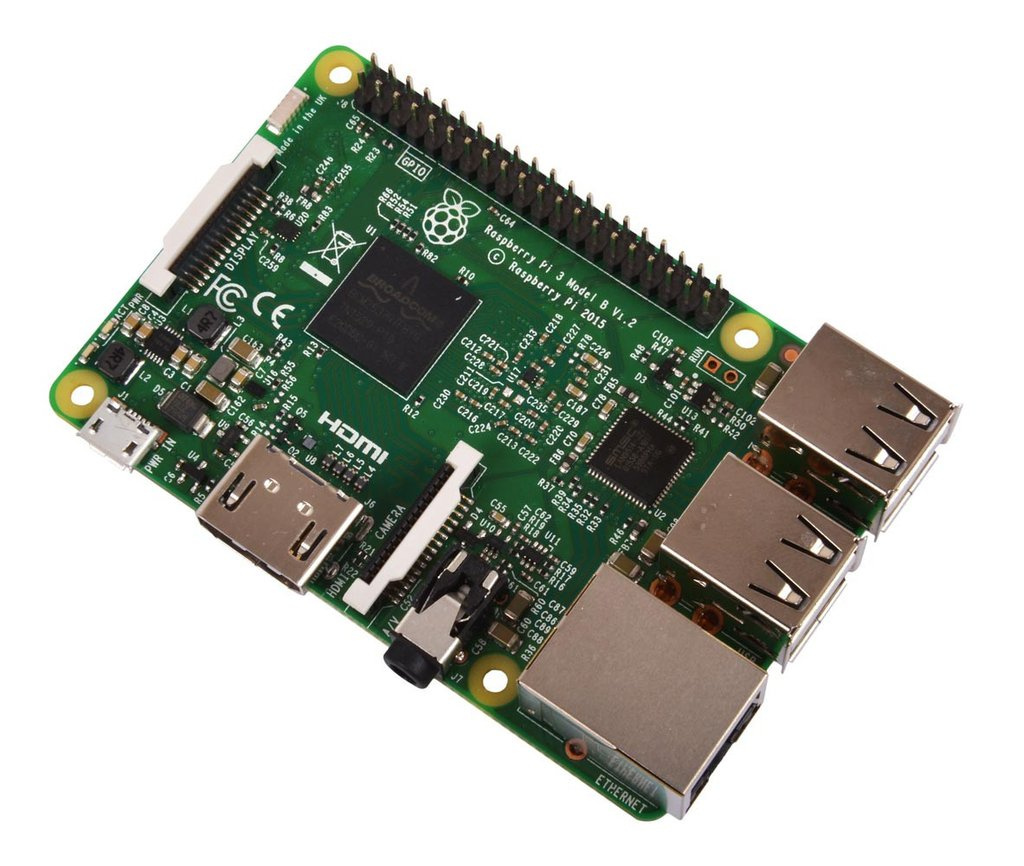
Company / Project - Raspberry Pi Foundation
LinuxGizmos Review
Product page
CPU - Broadcom BCM2837 (4x Cortex-53 @ 1.2GHz); Broadcom VideoCore IV GPU @ 400MHz
Memory - 1GB SDRAM
Price - $ 35
The world's most popular “hacker” Linux monolater, and the winner of our 2016 survey, it can still be found at the official price of $ 35 in outlets such as Circuit Specialists. The Raspberry Pi 3 gives you everything the same as the RPi 2 v1.2 for the same price, but with a higher clock speed and with WiFi and Bluetooth modules. Some other boards have the same RPI-compatible connector, can beat it in price, speed and features, and many are more open-source than RPi 3, which, like its relatives, does not have open access to full schemes and open-source license. but if you want guaranteed compatibility with Raspberry Pi (and dependence on it), and to be a member of a thriving community, this is still your choice. Recently, the Raspberry Pi Foundation doubled its educational potential by merging with CoderDojo, a non-profit organization that teaches coding for children from 7 to 17 years old. Practically, the Raspberry Pi Foundation has become a corporate member of the CoderDojo Foundation, but has retained its name and association with the commercial organization Raspberry Pi Trading.
Rico board
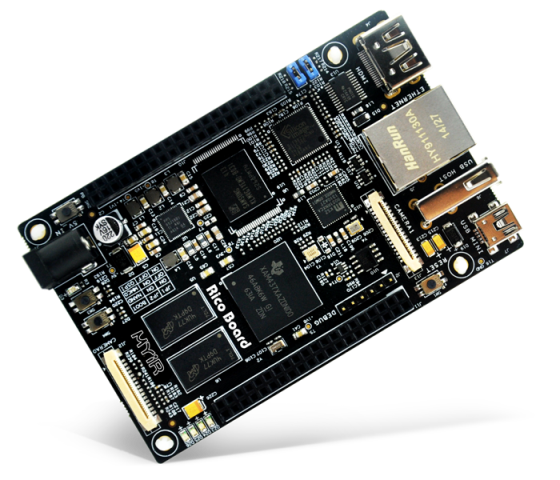
Company / Project - MYIR
LinuxGizmos Review
Product page
CPU - TI AM437x (1x Cortex-A9 core @ up to 1GHz); PowerVR SGX530 GPU
Memory - 512MB DDR3 RAM (alternatively 256MB or 1GB); 4GB eMMC flash
Price - $ 99 ($ 149 for a full set with cables and other)
Rico Board from MYIR with open specifications, 100 x 65mm, single-core processor from TI on the core Cortex-A9, Sitara AM437x SoC. The single-board has HDMI, GbE, and two USB ports, as well as a 24-bit LCD interface with support for 7 "touchscreen. There is also a camera interface and two 40-pin expansion connectors with support for CAN and other industrial interfaces.
Riotboard
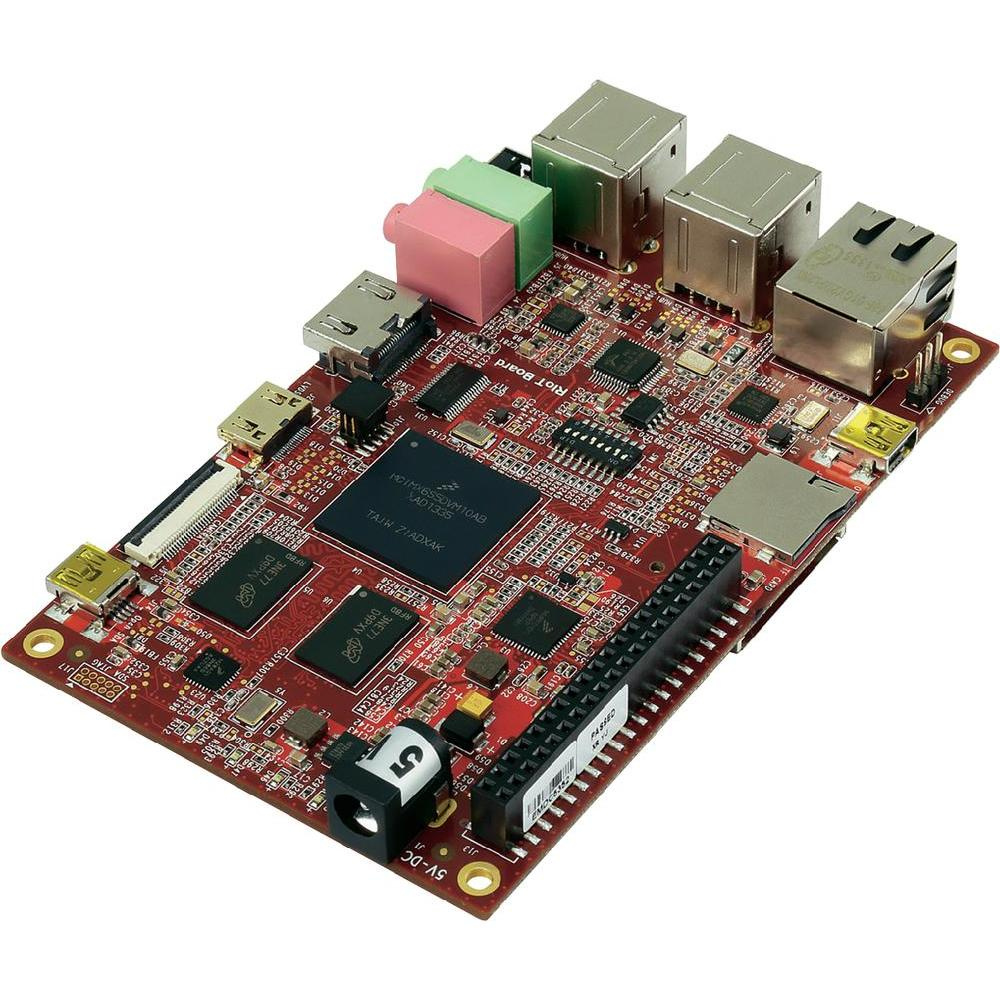
Company / Project - Newark Element14, RioTboard.org
LinuxGizmos Review
Product page
CPU - NXP i.MX6 Solo (1x Cortex-A9 @ up to 1GHz)
Memory - 1GB DDR3 RAM; 4GB eMMC
Price - $ 79
The RioT board (“Revolutionizing the Internet of Things”) runs Android or Linux on a low-power, single-core Cortex-A9 SoC. The size of the board is 120 x 75mm. A single board has several advantages over a similar Wandboard Solo, including double RAM, built-in flash, and many more USB ports.
SAMA5D4 Xplained
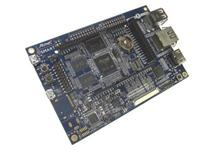
Company / Project - Newark Element14, Atmel
LinuxGizmos Review
Product page
CPU - Atmel SAMA5D4 (1x Cortex-A5 @ 528MHz)
Memory - 512MB DDR2 RAM; 512MB NAND flash
Price - $ 93.50
SAMA5D4 Xplained is a collaboration between the Atmel developers of Linux4SAM and Newark Element14. The Linux-compatible IoT-focused board contains Atmel's SAMA5D4 SoC, similar to the earlier SAMA5D3, but with one Cortex-A5 core. NEON, L2 cache, security is added to SAMA5D4, and some models support 720p video. The 138 x 88mm Xplained card comes with 512MB RAM and NAND flash, and is partially Arduino-compatible. You also get HDMI, Fast Ethernet, and three USB ports.
SavageBoard
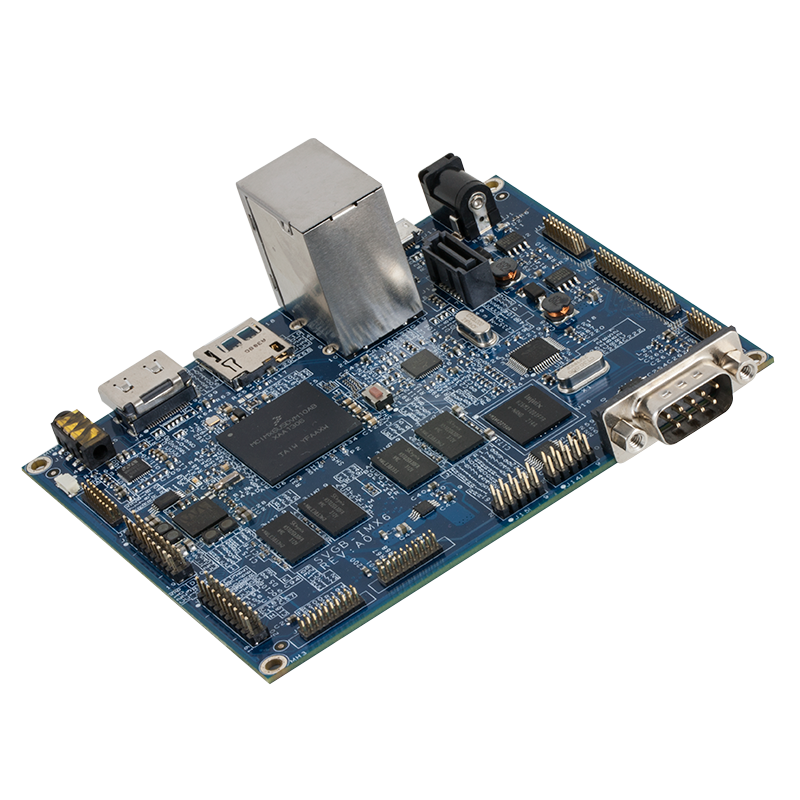
Company / Project - Poslab Technology
LinuxGizmos Review
Product page
CPU - NXP i.MX6 Solo, DualLite, or Quad (1x, 2x, or 4x Cortex-A9 @ 1GHz); Vivante CG880 GPU
Memory - 512MB (Solo) or 1GB DDR3 RAM; 4GB (Solo) or 8GB eMMC
Price - $ 59 (Solo); $ 79 (DualLite); $ 99 (Quad)
The old but still released Wandboard now has a direct competitor in the face of the SavageBoard based on the i.MX6 processor. The board size is 125 x 95mm, larger than the Wandboard, and there is no 2GB RAM, like the Wandboard Quad, but it is $ 20 cheaper. Unlike the Wandboard, SavageBoard has a wired eMMC, although not the second microSD slot, like the Wandboard. Among other differences, SavageBoard has a WiFi / Bluetooth module connected via SDIO / UART as an option for $ 35, while wireless interfaces are standard on DualLite and Quad WandBoards. SavageBoard does not have a mini-PCIe slot available to users, like the Wandboard, like the S / PDIF audio interface, although it does have MIPI-DSI in addition to HDMI and MIPI-CSI ports. Other features are similar, including a GbE port, two USB 2.0 ports, a micro-USB OTG port, as well as COM ports and audio. BSP is available for Android 6.0, Yocto Project, and Arch Linux. Poslab also posted on its site open source HobbitBoard. I write that it is available, but there is neither a price nor a store page. The HobbitBoard board is not the former Brillo-on-i.MX6 UltraLite from Wandboard.org with the same name, but now rebranded in PICO-IMX6UL-KIT under Android Things (see above). HobbitBoard is based on SavageBoard, but with a different set of features.
Seeeduino Cloud
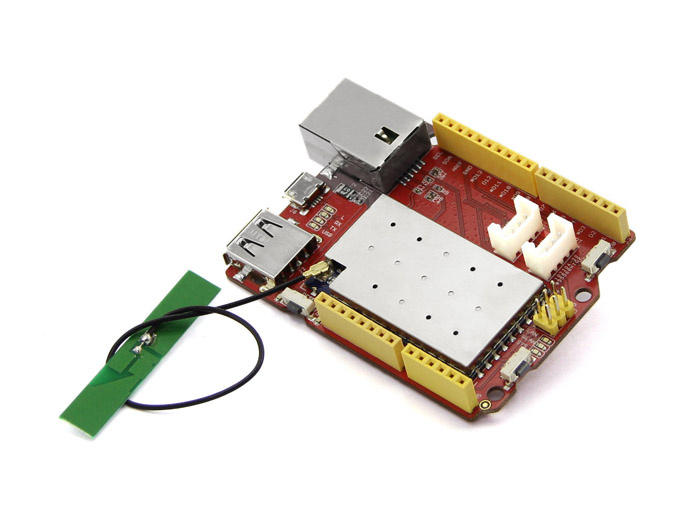
Company / Project - SeeedStudio
LinuxGizmos Review
Product page
CPU - Qualcomm Atheros AR9331 (1x MIPS 24kc @ 400MHz); Atmel ATmega32u4 MCU @ 16MHz
Memory - 64MB RAM; 16MB flash; 32KB flash for MCU
Price - $ 70
The Seeeduino Cloud board from SeeedStudio, the Arduino Yun clone is a variant of the Seeeduino Arduino clone, and also has Arduino support and the ability to connect Grove sensors and port extensions. By integrating the HE module from Dragino, the Seeeduino Cloud board has a Yun-like Atheros AR9331 WiFi subsystem and works under OpenWrt Linux. Other features include 10/100 Ethernet, USB host, micro USB, 20x DIO pins, 7 PWM channels, and 12 analog inputs. Like Seeeduino, Seeeduino Cloud simplifies the interface with Arduino firmware and complex web services, in this case the YunBridge library delegates all network connections and HTTP transaction processing to a Linux machine.
Tinker board
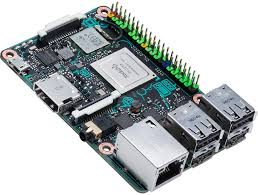
Company / Project - Asus
LinuxGizmos Review
Product page
CPU - Rockchip RK3288 (4x Cortex-A17 @ 1.8GHz); Mali-T760 GPU
Memory - 2GB LPDDR3 RAM
Price - $ 60
Asus's Tinker Board is the first “hacker” board with open specifications from a major PC manufacturer, and the first Rockchip-based board in Raspberry Pi sizes, and with a 40-pin connector. The RPi 3 is $ 25 cheaper, but the Tinker Board has an advantage - it is faster, although still 32-bit, on the SoC RK3288, it has a more powerful Mali T760 GPU, twice the amount of RAM, and GbE instead of Fast Ethernet. 4K / 30fps playback is also supported. RPi3-like features include WiFi, Bluetooth 4.0, and 4 USB 2.0 ports plus microSD, micro-USB, HDMI, MIPI-CSI, and MIPI-DSI interfaces. A community site is available with a forum and diagrams, 2D and 3D drawings, and other resources. The only available way is TinkerOS, based on Debian, with the LXDE desktop, Android support in development.
Udoo neo
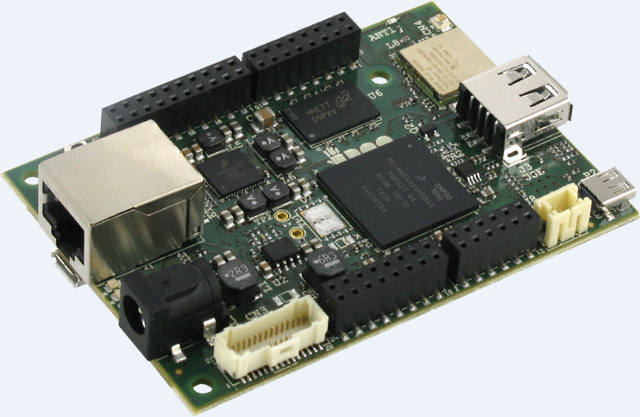
Company / Project - Udoo (Seco)
LinuxGizmos Review
Product page
CPU - NXP i.MX6 SoloX (1x Cortex-A9 @ 1GHz); Cortex-M4 MCU; Vivante GPU
Memory - 512MB DDR3L RAM (1GB on Plus version)
Price - $ 49.90 (Basic) $ 59.90 (Extended), $ 64.90 (Full)
Like the Udoo Quad / Dual mainboards with an IoT oriented, 85 x 59mm, the Udoo Neo board runs Linux or Android on an i.MX6 processor with a Cortex-A9 core. The Neo, however, is optimized for a single-core version of the i.MX6 SoloX, which has a Cortex-M4 MCU to simulate an Arduino. Specifications are slightly different from those stated on Kickstarter. Udoo Neo Basic has Ethernet, microSD, USB host, micro USB OTG, micro HDMI, LVDS with touchscreen, and Parallel camera interface. There is also an Arduino connector, as well as GPIO, UART, CAN, PWM, I2C, and SPI. For an extra $ 10, the Neo Extended board has an increased to 1GB RAM, a three-axis accelerometer, and WiFi / Bluetooth instead of Ethernet. The Neo Full board is identical to the Extended board, but has both Ethernet and wireless interfaces.
Udoo Quad / Dual / Dual Basic
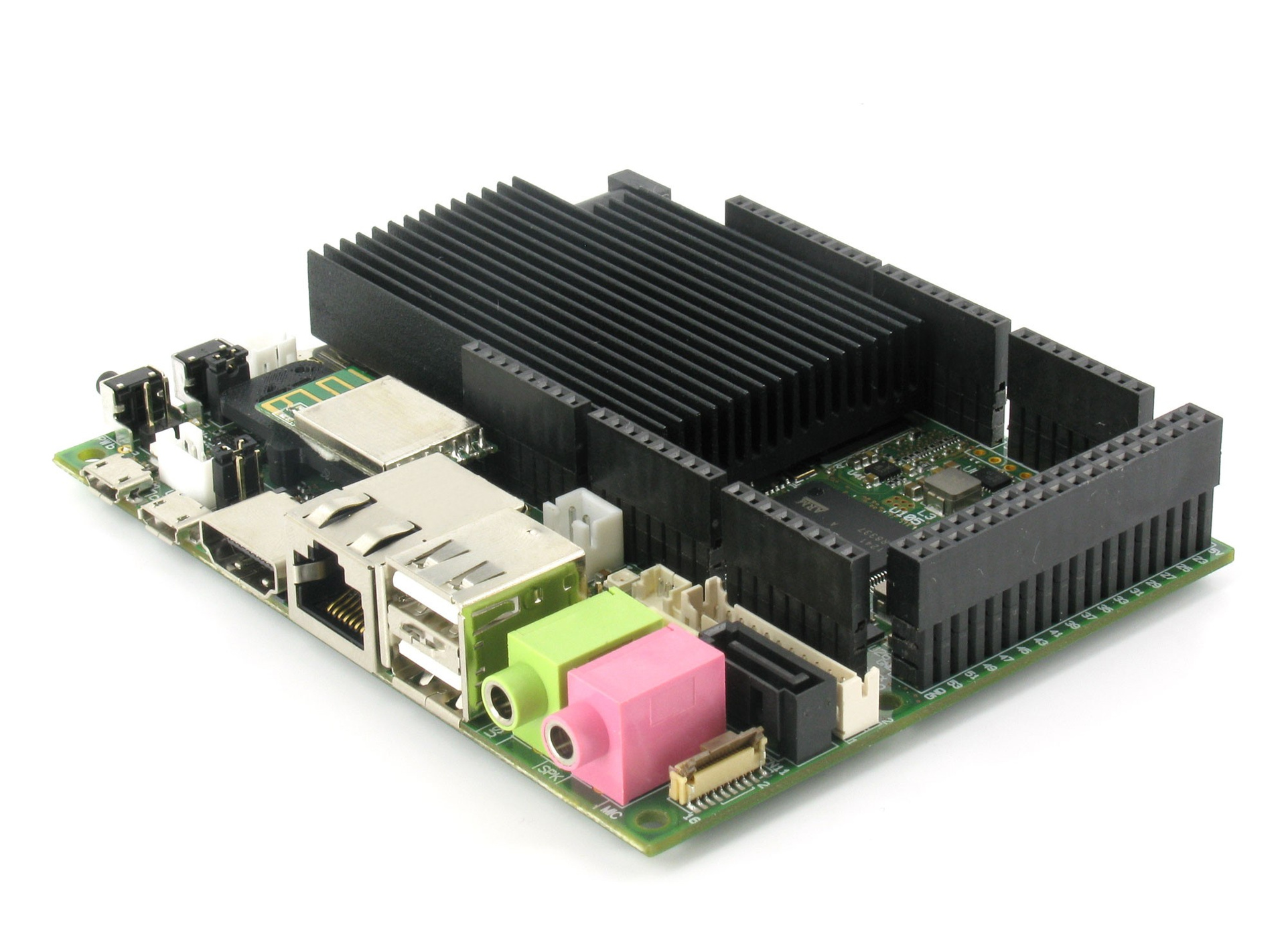
Company / Project - Udoo (Seco)
LinuxGizmos Review
Product page
CPU - NXP i.MX6 Quad or DualLite (4x or 2x Cortex-A9 @ 1GHz with Vivante GPUs); Atmel SAM3X8E Cortex-M3 MCU
Memory - 1GB DDR3 RAM
Price - $ 99 (Dual Basic); $ 115 (Dual); $ 135 (Quad)
Seco's Udoo project offers three flagship Udoo boards. All of them are 110 x 85mm in size, and the Arduino Due subsystem on the Cortex-M3. Udoo Dual Basic and Udoo Dual have an i.MX6 DualLite dual-core, while the Quad is equipped with a 4-core i.MX6 with a more powerful Vivante GPU. Dual Basic supports microSD, HDMI, LVDS with touchscreen, audio, and CSI connectors, with two USB host ports and two micro USB, one of which is OTG. There are 76 GPIO pins in addition to the Arduino interface. The Udoo Dual also has WiFi and GbE, and the Quad is also equipped with SATA.
Udoo x86
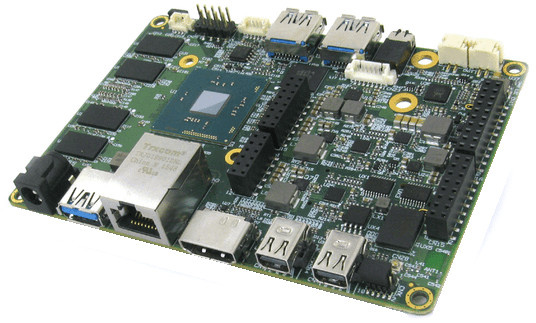
Company / Project - Udoo (Seco)
LinuxGizmos Review
Product page
CPU - Intel Braswell quad-core SoCs (Basic: Atom x5-E8000 @ up to 2.0GHz; Advanced and Advanced Plus: Celeron N3160 @ up to 2.24GHz; Ultra: Pentium N3710 @ up to 2.56GHz); Intel Gen 8-LP GPU
Memory - 2GB (Basic) or 4GB (Advanced / Plus) or 8GB (Ultra) DDR3L RAM; 32GB eMMC on Advanced Plus and Ultra
Price - Basic $ 125; Advanced $ 149; Advanced Plus $ 165; Ultra $ 259)
Delayed, which raised money for Kickstarter, the Udoo X86 SBC was finally sent to backers in March and is now publicly available. All versions, except Ultra for $ 259, have a quad-core Atom X5-E8000 and pass under our limit of $ 200. This is the most open source board from the new wave of “hacker” boards on x86, but not from Intel / AMD. Since our first review, the Ucooo project from Seco has added an “Ultra” version on the Pentium N3710 with 8GB RAM and 32GB eMMC. The N3710 processor is from the same Intel Braswell 14nm family as the “advanced” Celeron and the “basic” Atom. The range of SoC consumption is from 5-6W TDP, which is very small in the x86 world. The Udoo X86 also includes an Intel Curie chip with Quark MCU. The 120 x 85mm feature list of this device is too large to fully bring it here, but the main ones include M.2, SATA III, HDMI, 2x DP, wireless interfaces, GPIO. Works on Linux, Android, and Windows 7 / 8.1 / 10.
UP board
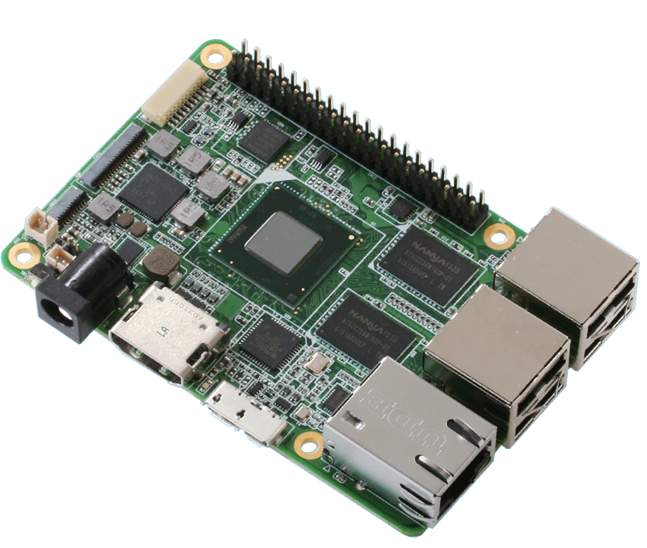
Company / project - Aaeon; UP Community
LinuxGizmos Review
Product page
CPU - Intel Atom x5-Z8350 (4x Cherry Trail @ 1.44GHz / 1.92GHz burst); Intel HD 400 Graphics
Memory - 1GB, 2GB, or 4GB DDR3L RAM; 16GB, 32GB, or 64GB eMMC
The price is $ 89 (1GB / 16GB), $ 99 (2GB / 16GB); $ 109 (2GB / 32GB); $ 129 (4GB / 32GB); $ 149 (4GB / 64GB)
The UP board came on time to our 2016 review, but we disqualified it for insufficient open source. Like the more powerful UP Squared (see below), and the future, reduced version of the UP Core UP board, the original UP was not supplied with the full layout. But the UP community now offers much more comprehensive documentation, including some diagrams, as well as downloading the source code, which is better than the usual “community” sites offering guidance and support. The UP card works under the Yocto Project or Ubuntu Linux, Android 5.0, or Windows 10 on a four-core 1.44GHz / 1.92GHz Atom x5-Z8350 from 14nm generation of Cherry Trail. Various memory configurations are available up to $ 149 4GB RAM, versions with 64GB flash, and 4GB are also available as part of the Intel RealSense Robotic Development Kit. The 85.6 × 56.5mm board size is not only similar to the Raspberry Pi, but also has a 40-pin Altera MAX V CPLD expansion bus that is compatible with RPi 2. UP also has a 16GB eMMC, GbE port, USB 3.0 OTG port, 4 ports USB 2.0, and two additional USB 2.0 connectors. the board is also equipped with HDMI, DSI, CSI, I2S, and eDP.
UP Squared
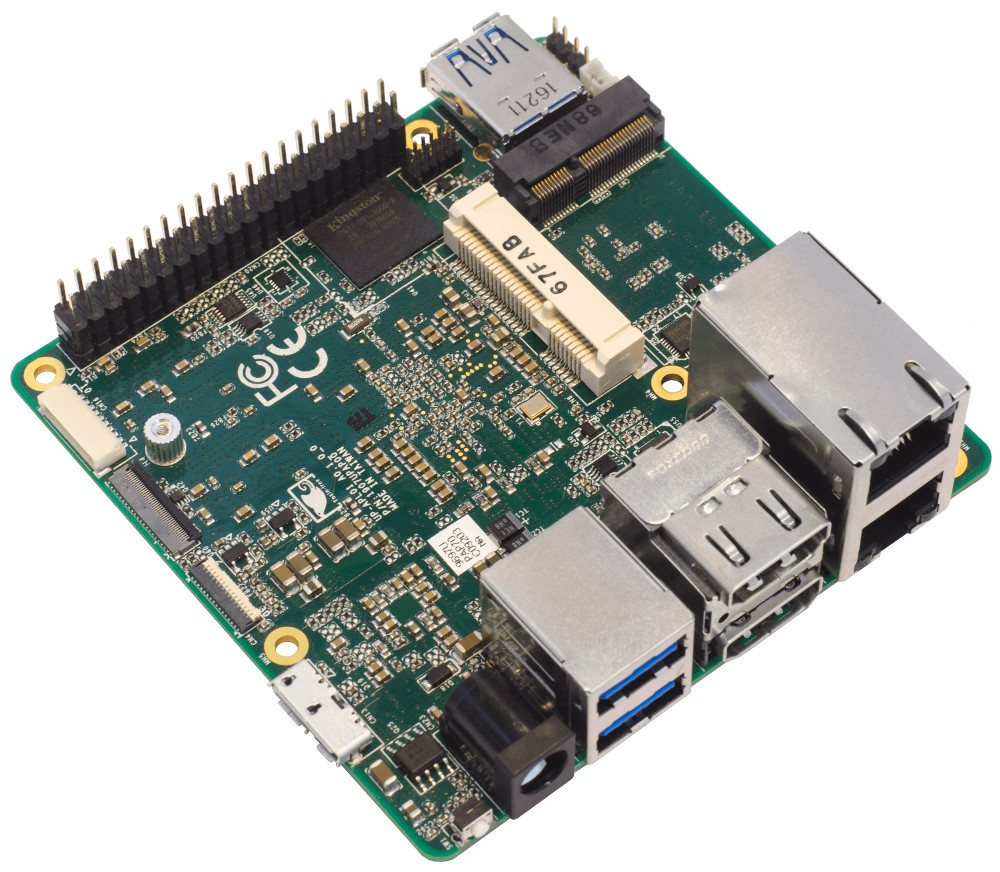
Company / project - Aaeon; UP Community
LinuxGizmos Review
Product page
CPU - Intel Celeron N3350 (2x Apollo Lake @ 1.1GHz / 2.4GHz) or Pentium N4200 (4x Apollo Lake @ 1.1GHz / 2.5GHz); Intel Gen9 HD 500/505 graphics; Altera Max 10 FPGA
Memory - 2GB, 4GB, or 8GB LPDDR4; 32GB eMMC 5.0, expands to 128GB
Price - $ 145 (Celeron with 2GB / 32GB), $ 169 (Celeron with 4GB / 32GB), $ 219 (Pentium with 4GB / 32GB), or $ 269 (Pentium with 8GB / 64GB)
The “Up2” (or “Up in the Square”) board, perhaps the most powerful “hacker” card in existence, began to be delivered to Kickstarter backers only recently. It is equipped with a dual-core Celeron or four-core Pentium SoC from the latest generation of “Apollo Lake” Atom-like processors from Intel, although the board on the Pentium far exceeds our limit of $ 200. As noted for the UP board, it is not fully open source, but close to that. The size is 90 x 86mm, the Up Squared board has 4K video encoder and decoder, two GbE ports, two HDMI outputs, SATA interface, support for M.2, and a mini-PCIe extension. You also get eDP, two MIPI-CSI, three USB host ports, a micro-USB 3.0 OTG port, and both interfaces, a 60-pin GPIO and 40-pin, connected to Altera Max 10 FPGA. Operating system support includes Linux (Ubuntu, Ubilinux, Yocto), Android Marshmallow, and Windows 10 IoT Enterprise.
USB armory
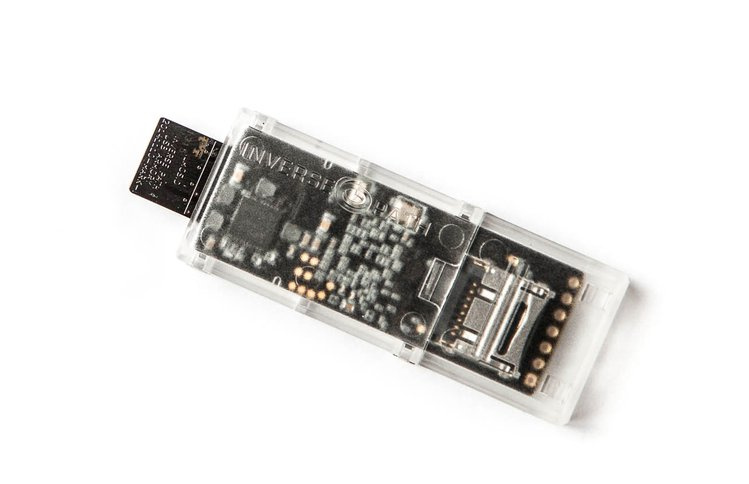
Company / Project - Inverse Path
LinuxGizmos Review
Product page
CPU - NXP i.MX53 (1x Cortex-A8 @ 800MHz)
Memory - 512MB DDR3 RAM
Price - $ 123 (with USB host adapter); $ 112 (100 Euros) without him
This small (65 x 19mm), funded Crowd Supply board for secure computer applications has Trustzone security, USB emulation, and a secure boot option that allows the user to use verification keys to ensure that only trusted firmware can be executed on this device. Fully open source USB Armory has only two ports: USB 2.0 OTG and microSD slot, but they can be expanded with an adapter. Surprisingly, this board is the size of a flash drive and supports Android and Linux. The adapter for 10 euros is needed to work without a USB port.
Wandboard reload
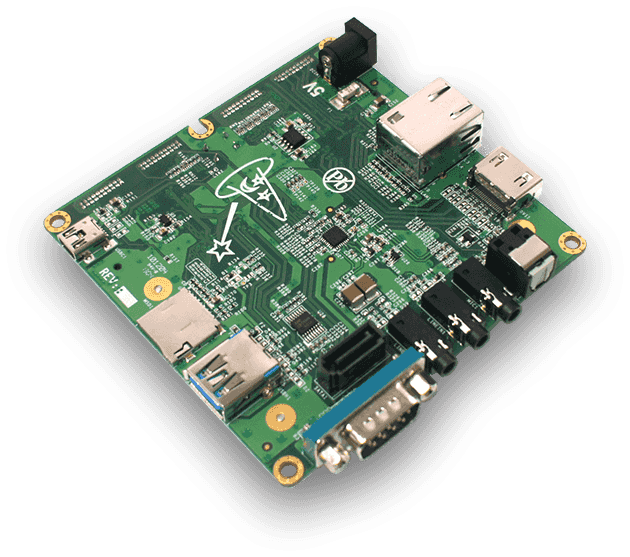
Company / project - Wandboard.org; Technexion
LinuxGizmos Review
Product page
CPU - NXP i.MX6 Solo, DualLite, or Quad (1x, 2x, or 4x Cortex-A9 @ 1GHz); Vivante GPU
Memory - 512MB (Solo) 1GB (Dual), 2GB (Quad) DDR3 RAM
Price - $ 79 (Solo); $ 99 (Dual); $ 129 Quad
The venerable Wandboard, modular, composite board in the form of a COM + assembly, the baseboard has a replaceable computing module, and has recently been updated to the Wandboard Reload. The price remained the same, and the possibilities are basically the same. The Wandboard Reload board adds the i.MX6 QuadPlus as an alternative to the Quad model, and an improved Vivante GC2000 + GPU. The WiFi module was upgraded to 802.11ac and Bluetooth to 4.1 BLE. New PMIC, and Wandboard.org fixed a problem with HDMI EDID + CEC. There are also two microSD slots, analog and S / PDIF audio, GbE, HDMI, camera interface, serial port, USB, and USB OTG. Dual does not have SATA as Quad, and Solo lost WiFi and Bluetooth. Wandboard boards now come alongside SavageBoard counterparts (see above.)
Z-turn Board
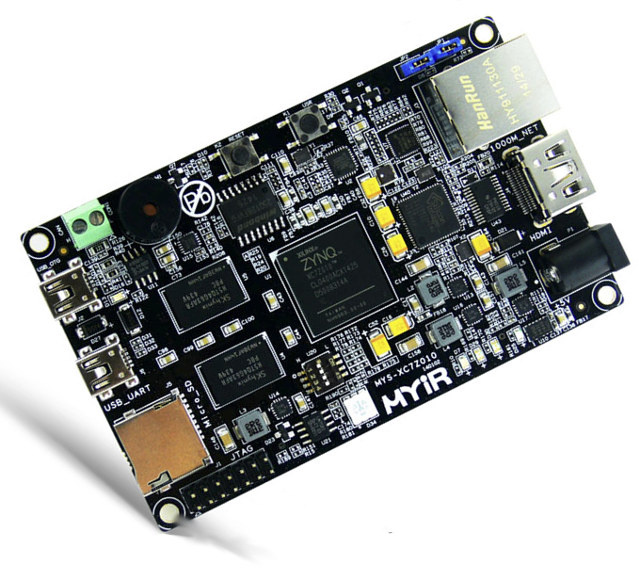
Company / Project - MYIR
LinuxGizmos Review
Product page
CPU - Xilinx Zynq-7010 or -7020 (2x Cortex-A9 cores @ 667MHz, plus FPGA) or optional Zynq-7020
Memory - 1GB DDR3 RAM
Price - $ 99 (7010) or $ 119 (7020)
The Z-turn Board works under Linux on the Xilinx Zynq-7010 or -7020, which combine two Cortex-A9 cores with FPGA. The size is 102 x 63mm, the board has HDMI, GbE, two mini-USB ports, different sensors, beeper, switches, buttons, LEDs. A dual 80-pin connector is connected to the FPGA, and can be used for LVDS pairs. The $ 139 kit includes a power adapter, cables, and a 4GB card.
All Articles